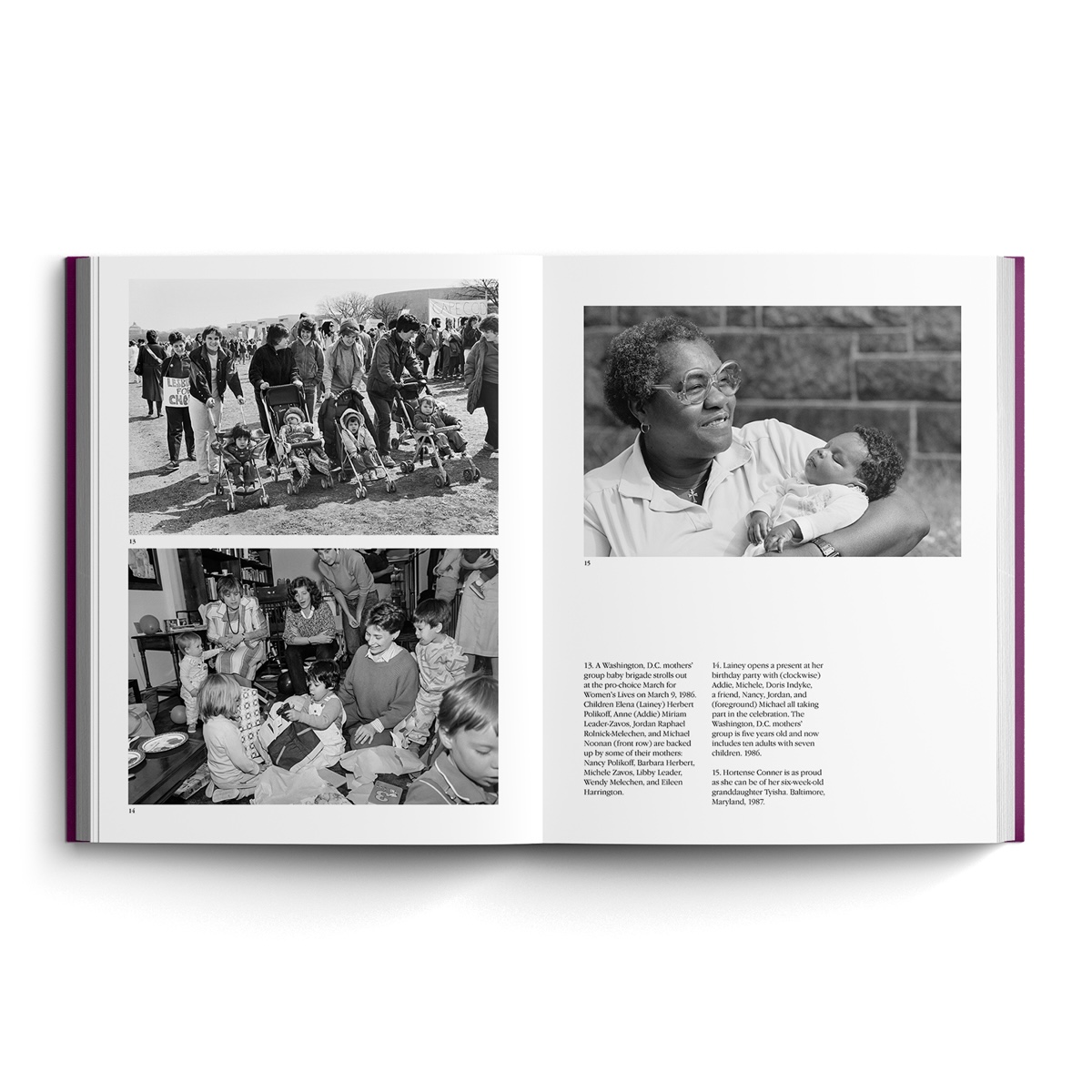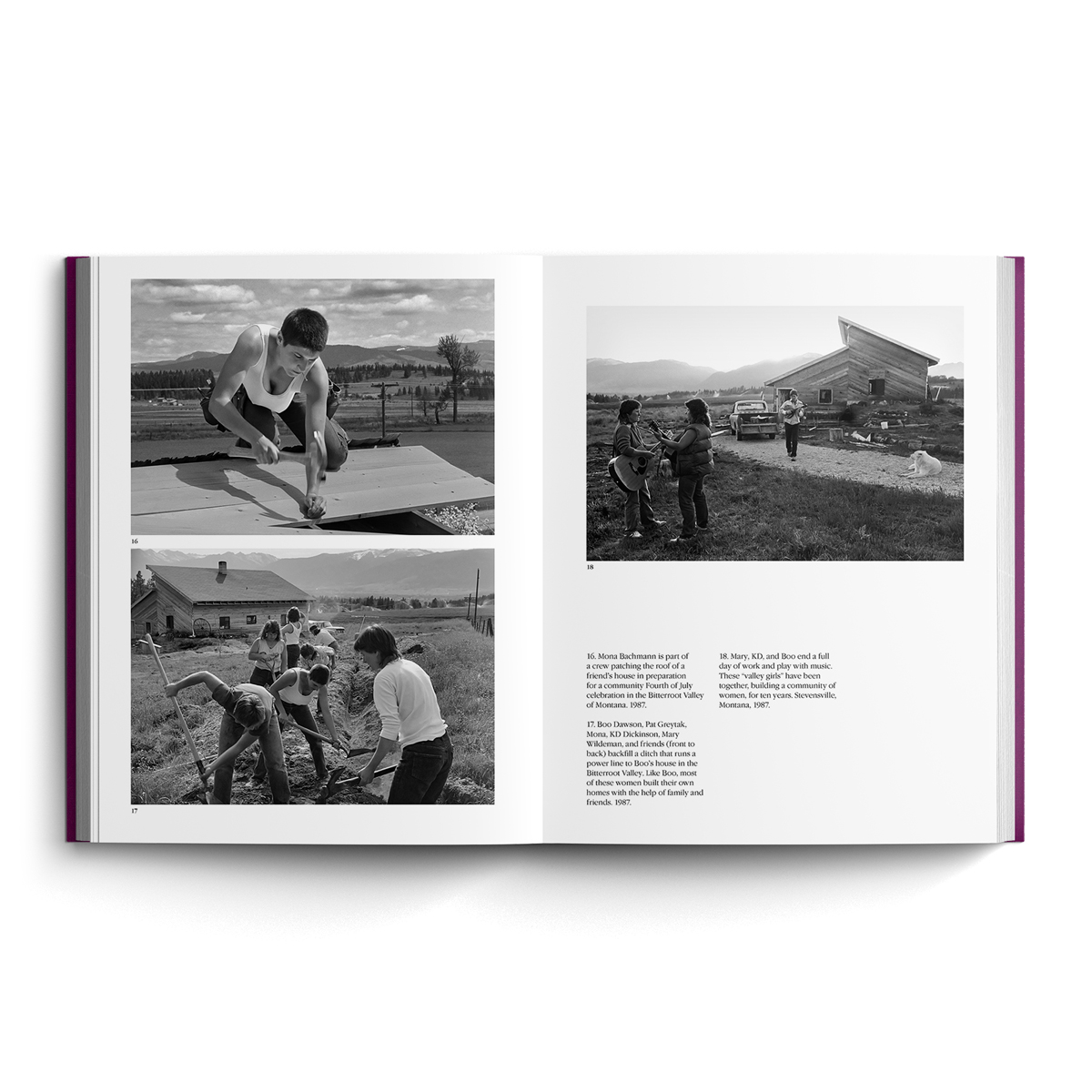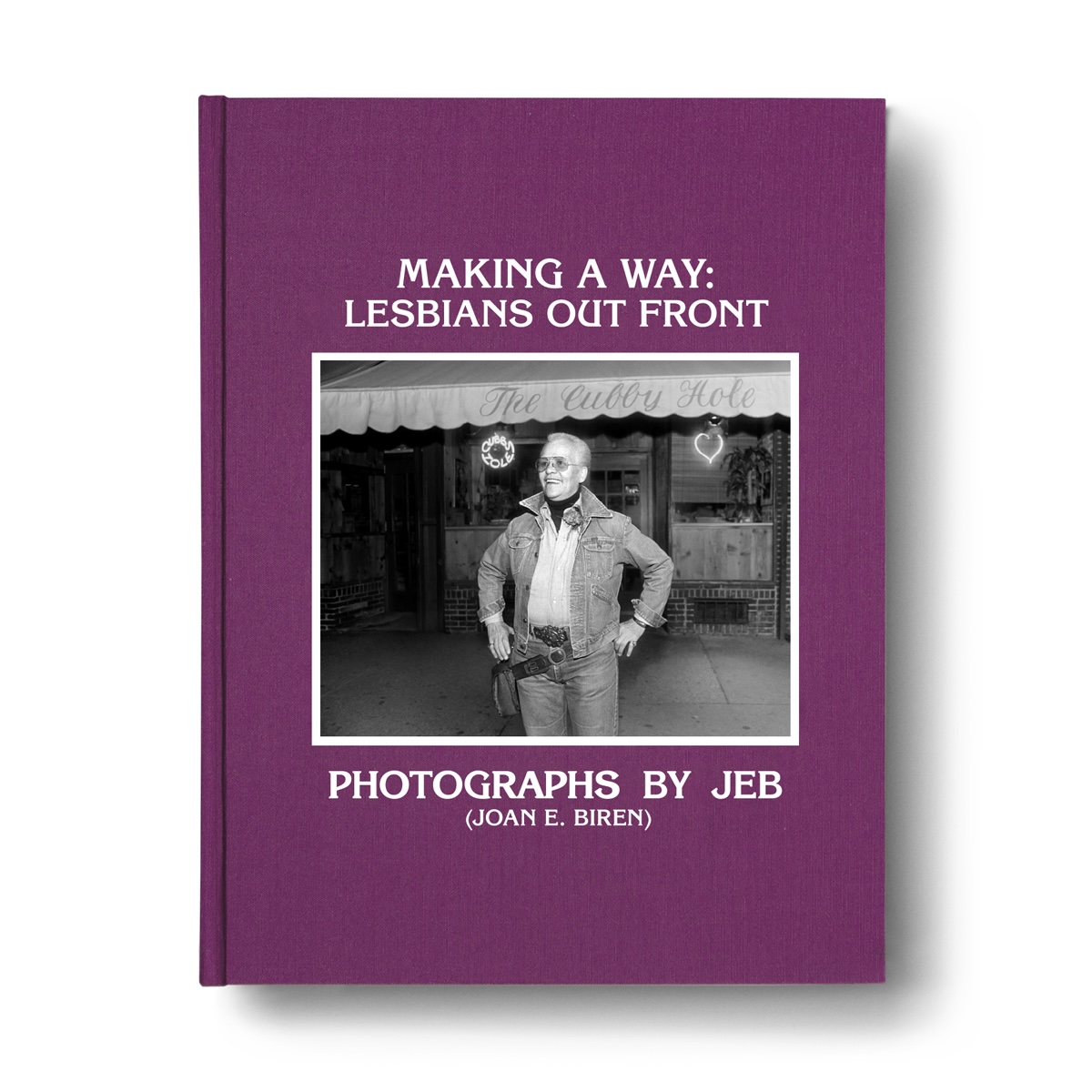All images © JEB, courtesy of Anthology Editions
Making Way: Lesbians Out Front is reissued by Anthology Editions to honour the fight for lesbian rights through 108 historic photographs
throughout the United States since the 1970s. Her work is in the permanent collections of the Smithsonian Institution, the Getty Museum, and the Leslie-Lohman Museum – but perhaps more significantly, her publications provide a portable queer history. She issued Eye to Eye: Portraits of Lesbians in 1979 (reissued in 2021 by Anthology Editions) and Making a Way: Lesbians Out Front, first published in 1987, is re-issued this month (also by Anthology Editions). JEB’s black-and-white photographs chronicle a queer coterie of creatives, activists, and professionals who worked intrepidly for political change, pushing the agenda forward not just for the gay community but for the betterment of American society at large. Joy emanates from the images, but the texts clarify that hardship belies these moments.
The book encompasses 108 photographs, and the women range in age from twenty-four (Brenda Crumley) to seventy-five (May Sarton). It is dedicated to Audre Lorde, whose ‘teach by living’ motto puts the capacity for change right at the foot of the individual. Photographs of Lorde appear within, seen both from the steps of the Lincoln Memorial addressing 300,000 people and taking a winter walk in the park in New York.
The book examines lesbian life in the U.S., specifically bookended between 1979 and 1987, momentous pillars which demarcate the First and Second National Marches on Washington for Lesbian and Gay Rights. This era, JEB writes, comprises the “years in which I held my camera and felt it to be a barometer measuring the pressure against us.” The camera as a tool vaults an evolution of perception: “When more and more lesbians chose to step in front of my lens, I knew the atmosphere had changed and that we had changed it.”
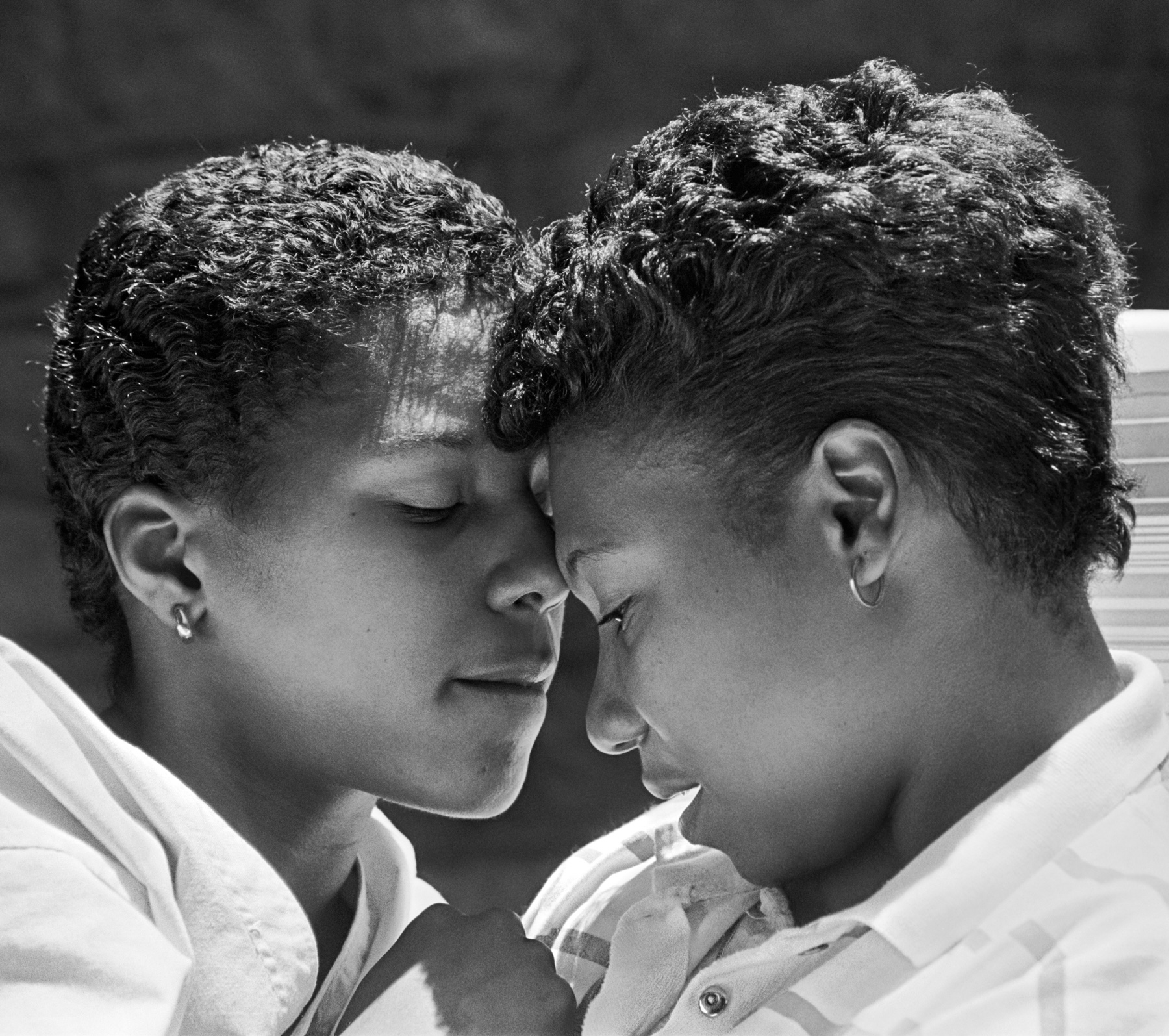
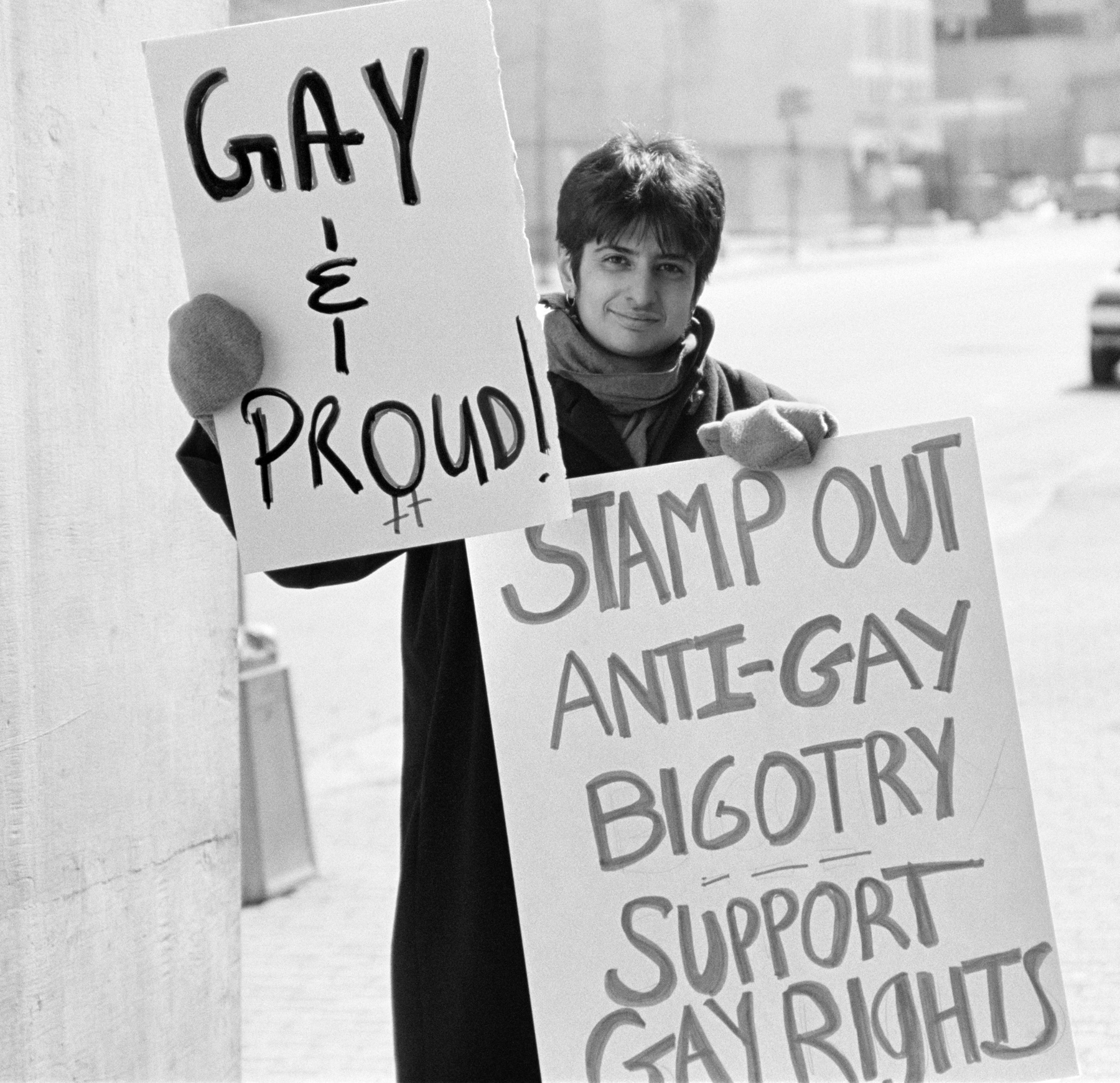
There are individual portraits, like that of welder Anna Marie Rechichi – who looks like she could be in Hackney or Bushwick with her slim jeans, white tank and black hat
The bold act of being photographed is furthered by agreeing to be documented permanently within the book object – despite the peril of being publicly queer. “By courageously choosing to have their photographs and their names in print, these lesbians are definitely out for good, for the good of all of us who need to see ourselves as real people with daily lives and work to do,” JEB wrote in 1987 in her Photographer’s Notes. What JEB gifts the participants is a kind of existential ratification, a celebration of presence otherwise sidelined in mainstream society. The lens examined what those performing their ‘normativity’ overlook, explicitly or implicitly. The power of the camera to legitimise identity is potent: It sublimates comfort and liberates from closeting.
The images and the extensive captions reveal both individual and collective strength as these figures make committed gestures within political movements, civil rights groups, and coalitions for peace. Some of the images feel slightly dated through hairstyles, eyewear, or garments, but mostly there’s a timeless feeling of love, community, and strength. There are counselors for battered women, workers for crisis hotlines, physicians providing health care services, professors in their offices, the solidarity of benefit fundraisers, participants on task forces, demonstrators.
Women of different races, ages, body types people the pages. There are scenes of lesbian affection: a romantic photo of Archene Turner and Lynn Walker touching foreheads in the backyard of their home in Georgia (1987), or longtime couple Lana Wall and Judith Carr clasping each other in Ohio (1986) or Cindy Miller and Bernadette Ryan kissing in front of a candle-lit table during their wedding vows at The Women’s Group in Texas (1987). There are scenes of leisure, namely a lesbian Le Déjeuner sur l’Herbe moment as friend trio lynda lou ease, beckie lee, and Sandra Lambert gather together on a white blanket in the woods (1986).
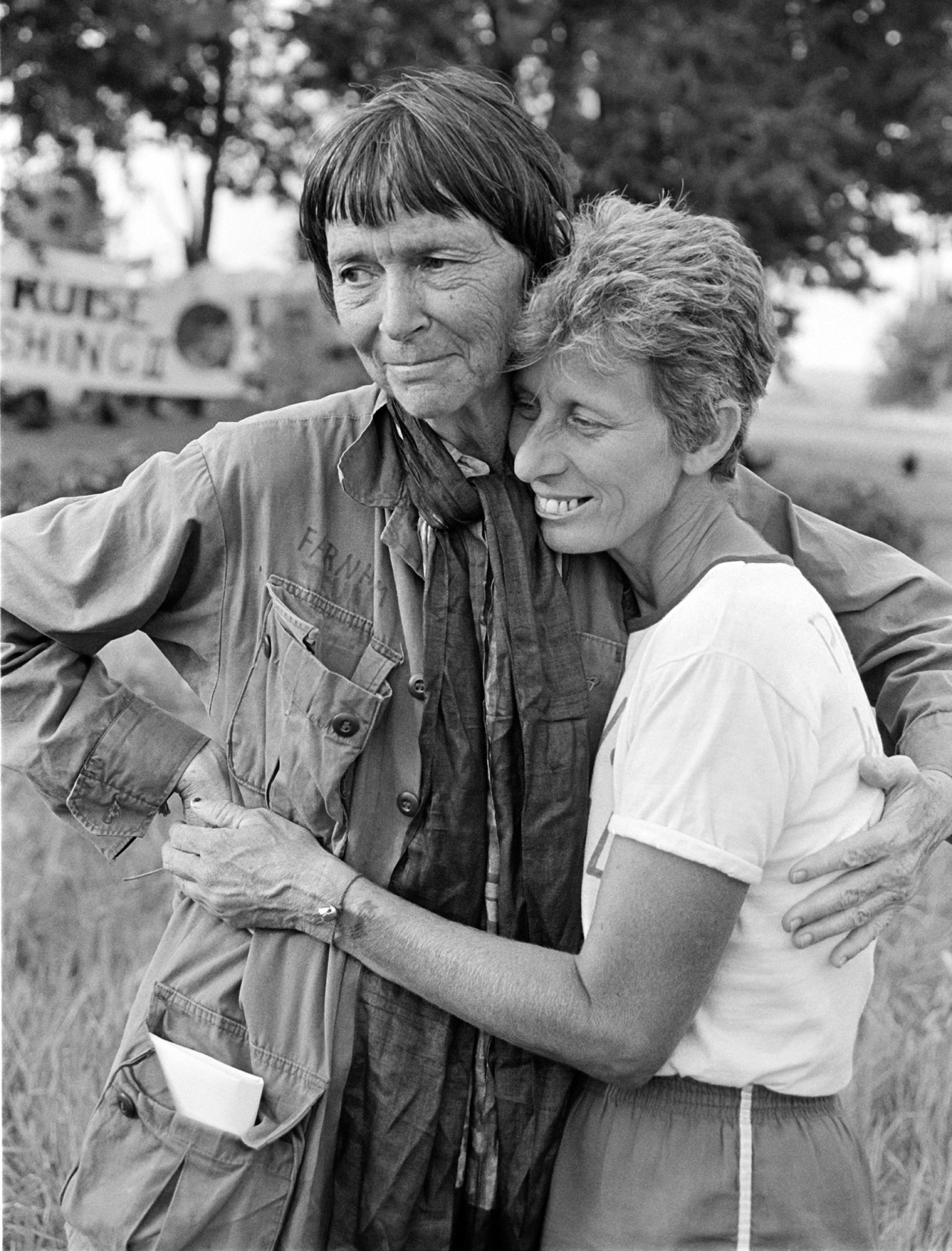
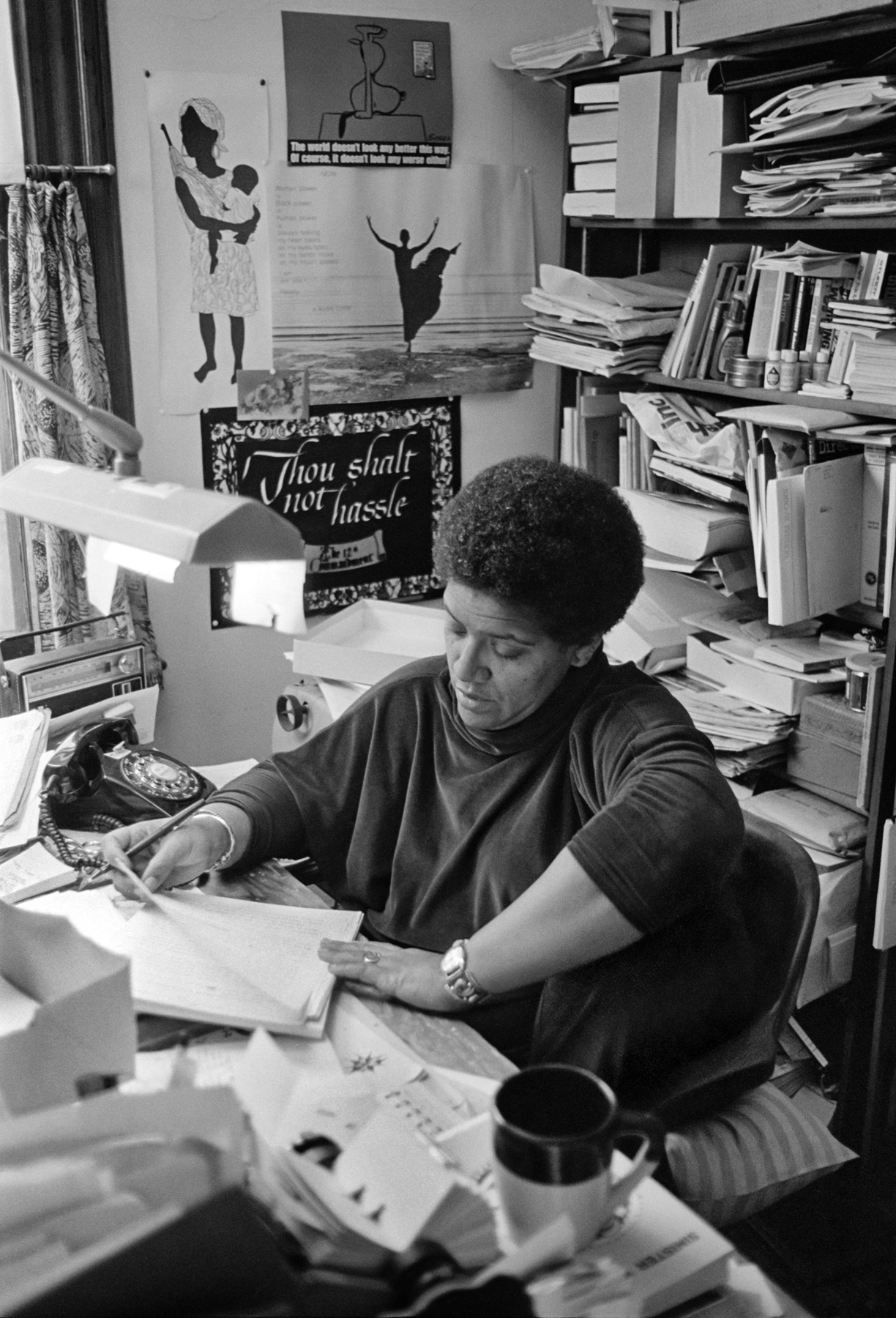
There are individual portraits, like that of welder Anna Marie Rechichi – who looks like she could be in Hackney or Bushwick with her slim jeans, white tank, black hat, sunglasses, studded belts, and fingerless gloves. Amie Laird tending a fire at the Michigan Womyn’s Music Festival in 1983 – barefoot, naked from the waist up, with a handkerchief on her head and rolled-up trousers – is the embodiment of a woman who is striking and self-sufficient. In one image, JEB and her lover are seen nude, legs tangled, in a mirror self-portrait taken in the Florida Keys in 1984.
In a foreword by Minnie Bruce Pratt, JEB’s aforementioned partner, she notes that being marginalised means wrangling “exclusion, oppression, and loss” but equally “risk, bravery, imagination, and survival, because we stand and look from the edge.” She meaningfully adds that: “This book could not have been made if women had not pushed past fear and been willing to claim their lesbian identity, to be seen and named so.” It is moving to learn the names of these fierce women, who are all explicitly cited and interviewed. To be named and to be seen: that is indeed making a way.
This reissue reveals both political upheaval and communal grace. Rejiggering the historical record, it provides a sense of ongoing lineage as new generations fight for queer rights. This book is not just a spotlight on a community for a community: it’s a socio-historical movement of empowerment that any orientation should embrace. As stated in her 2024 essay, educator and activist Cheryl Clarke concludes: “Heterosexuals are invited”.
